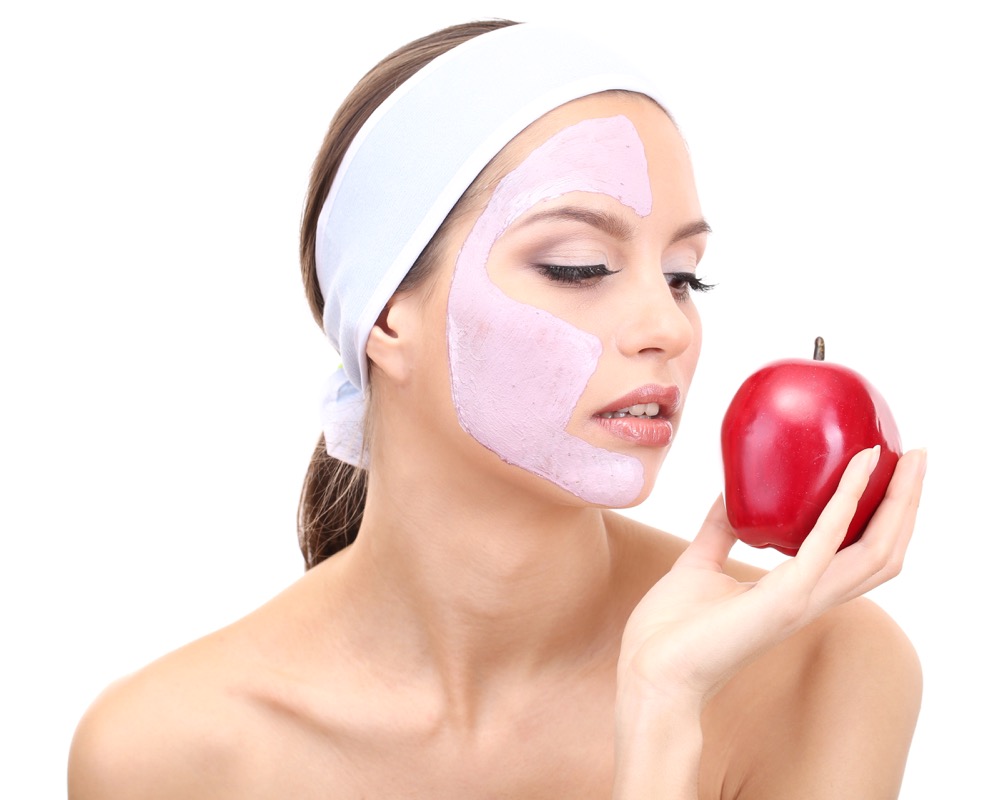Hydroxy acids are exfoliants – substances that remove dead skin cells. Their nourishing effect is versatile. How do hydroxy acids work and what types are there? How to use AHA, BHA and PHA acids?

How do hydroxy acids work? Groups
Hydroxy acids are divided into three groups: alpha hydroxy acids (AHA), beta hydroxy acids (BHA) and polyhydroxy acids (PHA). They are obtained mainly from natural sources such as plants, fruits and milk. AHA acids have the strongest and the best effect, but their use is associated with a risk of irritation. PHA acids are the mildest, which makes them a good choice for beginners who only want to refresh and moisturise their skin. Products with AHA and BHA will be better for acne.
AHA acids
Treatments and preparations with AHA acids are mainly recommended for people with mature or acne-prone skin. If used regularly, AHA acids moisturise, make the skin elastic, reduce discoloration and small wrinkles. A high concentration of AHA acids treats acne, but given that such acids can cause irritation, they are not recommended for every person. In general, they are not recommended for the owners of sensitive skin with vascular problems. The most frequently used in cosmetics AHA acids are:
- lactic acid – naturally found in buttermilk, yogurt, sour milk and pickled vegetables. It has exfoliating and antibacterial effect, moisturise the skin and strengthen the collagen structure;
- glycolic acid -obtained from sugar cane and fruits (grapes, apples and gooseberries). It stimulates cell renewal, lightens discoloration and accelerates collagen synthesis;
- malic acid – occur in fruits, especially in apples. A low concentration of malic acid has a moisturizing and lightening effect, whereas a higher concentration removes the dead skin and exfoliates it;
- citric acid – occurs mainly in citruses, pineapples and kiwi fruits. It brightens the skin and evens out the skin tone;
- mandelic acid – obtained from almonds and such fruits as cherries, peaches and apricots. Mandelic acid has antibacterial properties, removes the dead skin, regulates the work of the sebaceous glands and also stimulates the production of hyaluronic acid, tightening and moisturising the skin.
BHA acids
The only BHA acid used in skin care is salicylic acid. It is produced from leaves of birch, chamomile, roses and raspberries. Because salicylic acid dissolves in fats, it has the ability to penetrate the sebum reaching the deep layers of the skin. It has strong exfoliating, anti-acne and antibacterial properties. What’s more, this acid unclogs pores, cleanses hair follicles and reduces blackheads. This substance is gentler than AHA acids, causing fewer side effects.
PHA acids
PHA acids, so gluconolactone, glucoheptanolactone and lactobionic acid, are a new generation of acids that resemble AHA ones in their properties, but their action is much gentler so they don’t irritate or dry the skin. The use of PHA acids results in refreshing, cleansing and firming of the skin. They are recommended for people with sensitive skin who cannot use stronger AHA or BHA acids.
How to use AHA, BHA and PHA acids?
The main principle of care with acids is caution. Some acids are very strong, so they can cause irritation and dry out the skin. If you want to start using acids, you should look for ready-made products such as creams, masks and scrubs that contain a safe concentration of aids.
You can also buy acids in many online shops and prepare a cosmetic product yourself. The concentration of acids used can increase gradually.
AHA, BHA and PHA acids and sun protection
When it comes to skincare with acids, the season is very important. In view of the fact that acids cause discoloration under the influence of sun rays, they should not be used in the summer, because the skin is then particularly exposed to the effects of the sun. Once the skin is exfoliated, the skin is very vulnerable and susceptible to sunburns. Regardless of the season, acid care should be supplemented with creams with UV filters.

















Leave a Reply